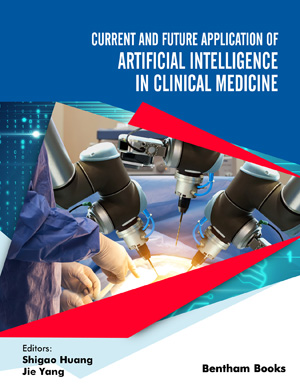Abstract
Background: Measuring cornea thickness is an essential parameter for patients undergoing refractive Laser-Assisted in SItu Keratomileusis (LASIK) surgeries.
Discussion: This paper describes about the various available imaging and non-imaging methods for identifying cornea thickness and explores the most optimal method for measuring it. Along with the thickness measurement, layer segmentation in the cornea is also an essential parameter for diagnosing and treating eye-related disease and problems. The evaluation supports surgical planning and estimation of the corneal health. After surgery, the thickness estimation and layer segmentation are also necessary for identifying the layer surface disorders.
Conclusion: Hence the paper reviews the available image processing techniques for processing the corneal image for thickness measurement and layer segmentation.
Keywords: OCT, edge detection, image segmentation, cornea thickness, cornea segmentation, cornea layers, MATLAB.
[http://dx.doi.org/10.1016/j.jcrs.2005.12.103] [PMID: 16631057]
[http://dx.doi.org/10.1016/j.jcrs.2010.12.037] [PMID: 21333881]
[http://dx.doi.org/10.1109/CRV.2009.22]
[http://dx.doi.org/10.1007/978-3-319-61137-2_6]
[http://dx.doi.org/10.1016/j.jcrs.2008.07.013] [PMID: 19006737]
[http://dx.doi.org/10.1111/j.1442-9071.2008.01892.x] [PMID: 19138310]
[http://dx.doi.org/10.1016/S0161-6420(91)32298-X] [PMID: 2023747]
[http://dx.doi.org/10.1016/S0886-3350(02)01921-1] [PMID: 12842687]
[http://dx.doi.org/10.1034/j.1600-0420.1998.760507.x] [PMID: 9826037]
[http://dx.doi.org/10.2147/OPTH.S32955] [PMID: 22848145]
[http://dx.doi.org/10.1016/j.jcrs.2007.01.021] [PMID: 17466858]
[http://dx.doi.org/10.1111/j.1444-0938.2010.00509.x] [PMID: 20718786]
[http://dx.doi.org/10.1016/j.jcrs.2004.09.047] [PMID: 15721715]
[http://dx.doi.org/10.1016/S0886-3350(97)80113-7] [PMID: 9423906]
[http://dx.doi.org/10.1097/00003226-200011000-00007] [PMID: 11095052]
[http://dx.doi.org/10.1016/S0886-3350(01)01089-6] [PMID: 11709257]
[http://dx.doi.org/10.1097/01.opx.0000180817.46312.0a] [PMID: 16276321]
[http://dx.doi.org/10.1016/j.jcrs.2004.09.021] [PMID: 15899446]
[http://dx.doi.org/10.1016/S0886-3350(01)01277-9] [PMID: 11821205]
[http://dx.doi.org/10.1016/S0886-3350(01)01162-2] [PMID: 11821206]
[http://dx.doi.org/10.1038/sj.eye.6700211] [PMID: 12439665]
[http://dx.doi.org/10.1016/S0886-3350(03)00123-8] [PMID: 12900238]
[http://dx.doi.org/10.1016/j.ophtha.2007.02.017] [PMID: 17507097]
[http://dx.doi.org/10.1136/bjophthalmol-2014-306340] [PMID: 25824260]
[http://dx.doi.org/10.1016/S0161-6420(02)01298-8] [PMID: 12623813]
[http://dx.doi.org/10.1016/S0886-3350(02)01815-1] [PMID: 12551679]
[http://dx.doi.org/10.4103/0301-4738.33819] [PMID: 17699942]
[http://dx.doi.org/10.1167/iovs.10-6312] [PMID: 21493951]
[http://dx.doi.org/10.1586/eop.12.28]
[http://dx.doi.org/10.1007/s00417-015-2998-y] [PMID: 25896108]
[http://dx.doi.org/10.1016/j.ajo.2016.04.004] [PMID: 27084001]
[http://dx.doi.org/10.1109/IEMBS.2007.4353619]
[http://dx.doi.org/10.1109/42.952728] [PMID: 11585207]
[http://dx.doi.org/10.1109/CRV.2009.22]
[http://dx.doi.org/10.1109/IEMBS.2008.4649855]
[http://dx.doi.org/10.1007/978-3-642-15558-1_4]
[http://dx.doi.org/10.1109/CRV.2009.22 ]
[http://dx.doi.org/10.1117/1.3578461] [PMID: 21639575]
[http://dx.doi.org/10.1364/BOE.2.001524] [PMID: 21698016]
[http://dx.doi.org/10.1364/OE.18.019413] [PMID: 20940837]
[http://dx.doi.org/10.1117/1.JBO.18.5.056003] [PMID: 23640074]
[PMID: 25298927]
[http://dx.doi.org/10.1155/2014/479268] [PMID: 24672579]
[http://dx.doi.org/10.1186/s40662-015-0011-9] [PMID: 26605357]
[http://dx.doi.org/10.1155/2016/1420230] [PMID: 27247559]
[PMID: 28393021]
[http://dx.doi.org/10.1109/ACCESS.2017.2712767]
[http://dx.doi.org/10.1007/978-3-319-46976-8_11]
[http://dx.doi.org/10.1109/TMI.2016.2528129] [PMID: 26886975]
[http://dx.doi.org/10.1016/j.cmpb.2015.12.014] [PMID: 2682690]
[http://dx.doi.org/10.1016/j.media.2016.01.005] [PMID: 26917105]
[http://dx.doi.org/10.1016/j.media.2017.05.001] [PMID: 28526212]
[http://dx.doi.org/10.1007/978-3-319-46723-8_52]














